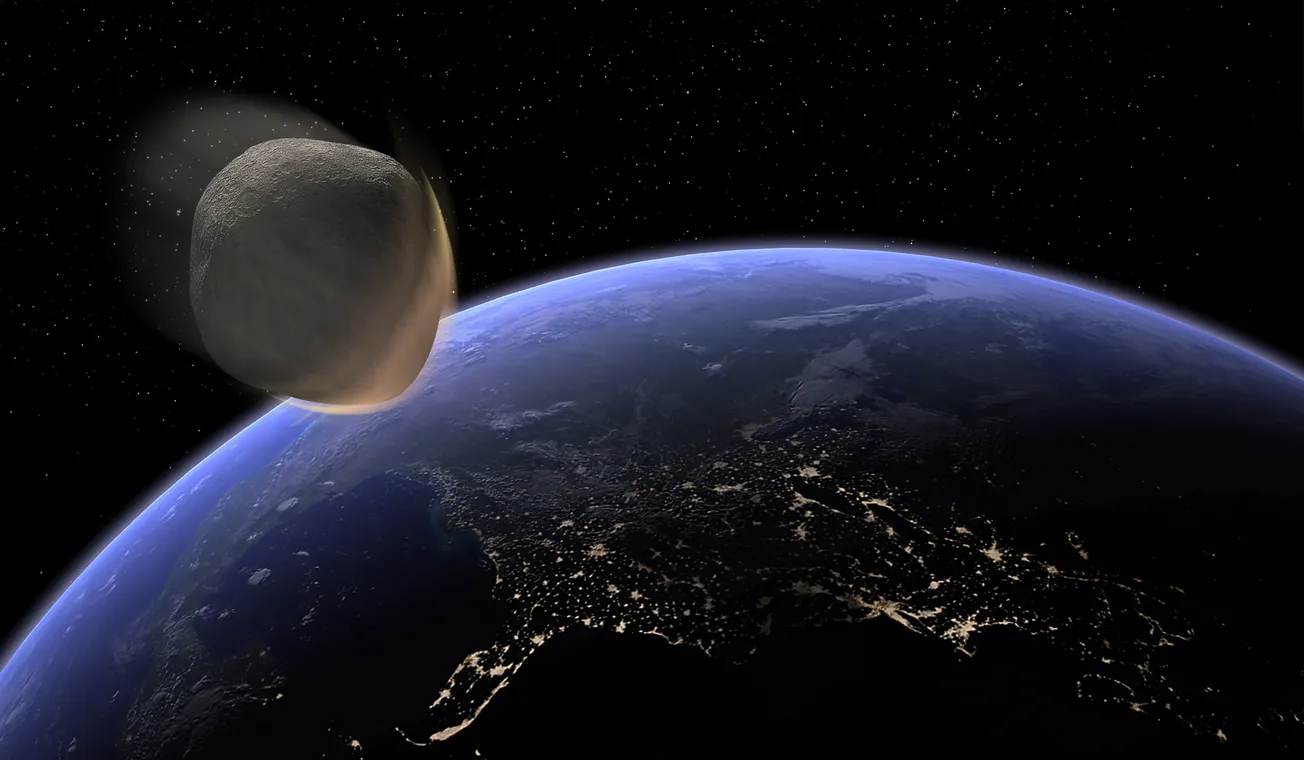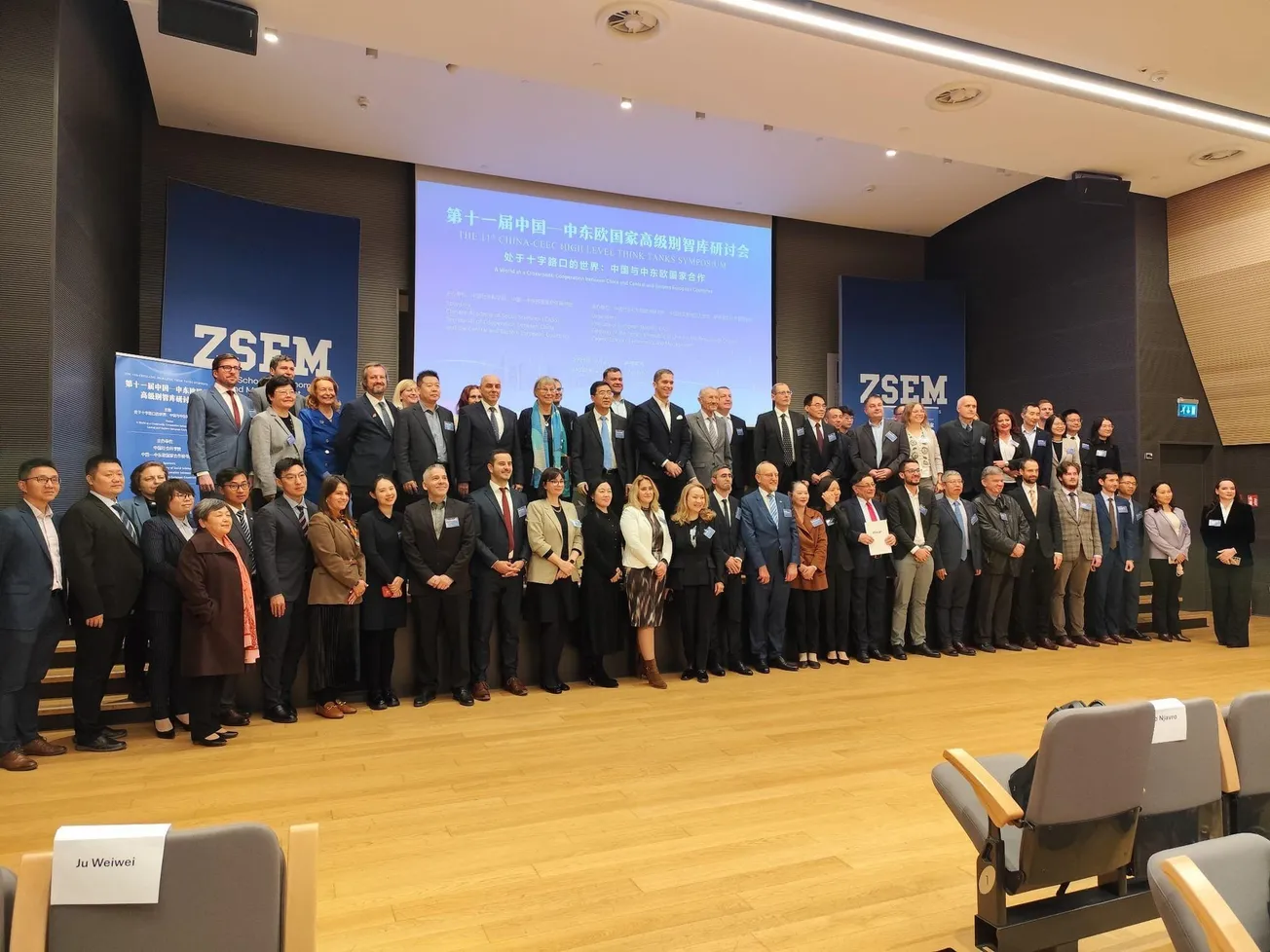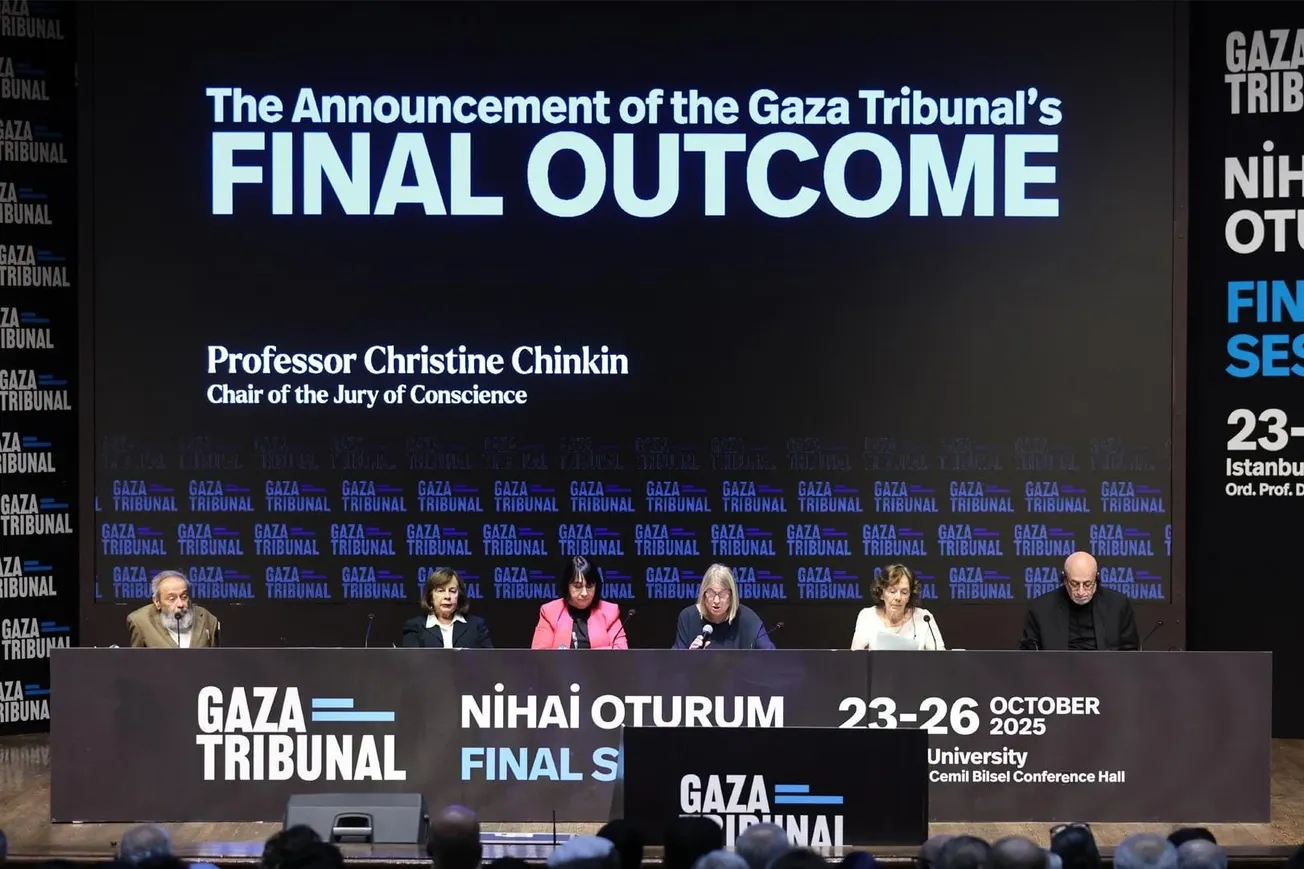Feb. 21—In February, scientists warned that there was a chance that asteroid 2024 YR4 could strike the Earth in 2032. While additional observations have shown that there is little risk, this asteroid should serve as a wake-up call.

Depending on where it would have impacted, it could have destroyed an entire metro area. Based on its size (130-300 feet across, or 40-90 meters), it would pack quite a punch: very roughly 50 megatons, or about one thousand times the combined destructive force of the nuclear bombs dropped on Hiroshima and Nagasaki.
As a sobering reminder of the perils we create for ourselves, the energy of this asteroid impact would be similar to the entire nuclear arsenal aboard an Ohio-class submarine—and the U.S. has 14 such submarines.
Our current equipment will lose sight of 2024 YR4 in April, leaving us blind until 2028 when we can update our projections.
Confronted with this possibility, what questions should we ask?
I propose four:
- How well do we know the threats of asteroids?
- How can we defend ourselves against them?
- What sort of international cooperation will be required?
- What other benefits will a planetary defense project have for technology, society, and the economy?
1. How (Well) Do We Understand Asteroids?
In the 1990s, the U.S. Congress mandated that NASA find and track 90% of near-Earth objects (NEOs) greater than 1 kilometer in diameter. The impact of objects this big would have worldwide effects and destroy entire regions of the planet. For example, the asteroid that wiped out the dinosaurs—and a majority of species on earth—was about 10 to 15 km in diameter.
The task of finding 90% of such objects is considered achieved, but the understanding of smaller bodies is incomplete, and there is also the threat of long-period comets.
Let’s look at one of the instruments used to detect asteroids. It’s called the Wide-field Infrared Survey Explorer (WISE), and it was launched at the end of 2009.

It is equipped with an infrared telescope, 40 cm in diameter, that operates in four wavelength bands: 3.4 µm, 4.6 µm, 12 µm, and 22 µm. (In comparison, the light visible to our eyes is roughly half a µm.)
On the search for asteroids, why use infrared light instead of visible light? The answer is that some asteroids are very dark. Imagine trying to find a piece of charcoal against the inky backdrop of space? It would reflect very little light and be hard to find.
But no matter what sort of light an object reflects, there is also the issue of the light that it emits.
All objects (unless they are at absolute zero) emit heat in the form of electromagnetic radiation. Much of the heat that you can feel emanating from a hot stove or a heating radiator is actually infrared light. When objects get even hotter, they begin to emit visible light, starting red, and moving across to incorporate more of the rainbow until becoming the white light that we get from incandescent light bulbs, emitted from a very hot filament.
For any temperature, there is a corresponding peak wavelength of the emitted radiation. The infrared wavelengths targeted by WISE correspond to temperatures of approximately 130 K, 240 K, 630 K, and 850 K. (That’s −140ºC, −30ºC, 360ºC, and 580ºC, or −220ºF, −25ºF, 675ºF, and 1,050ºF.)
This means the WISE space telescope can see the heat coming from even very cold objects, like asteroids.
Over the course of a year, WISE imaged the entire sky, in all directions.
By then, it had used up all of its liquid hydrogen coolant, used to keep the telescope colder than the objects it is observing. Without the coolant, WISE could no longer see in the two coldest wavelengths.
But the observation system was reactivated, and for a decade, it continued scouring the sky in the warmer wavelengths, making more than 20 passes of the entire field of view before it was decommissioned last year.
WISE is just one example — there are other satellites both in space and on the ground used to detect these objects and chart their orbits.
What has been the result?
We have identified over 37,000 objects, with roughly 3,000 more discovered every year. Astronomers have estimated the percent of these objects that have been found:
| Size | Percent discovered |
| > 1 km | ~90% |
| > 140 m | ~40% |
| < 140 m | < 1% |
Here’s a visual representation produced by the NASA WISE mission:
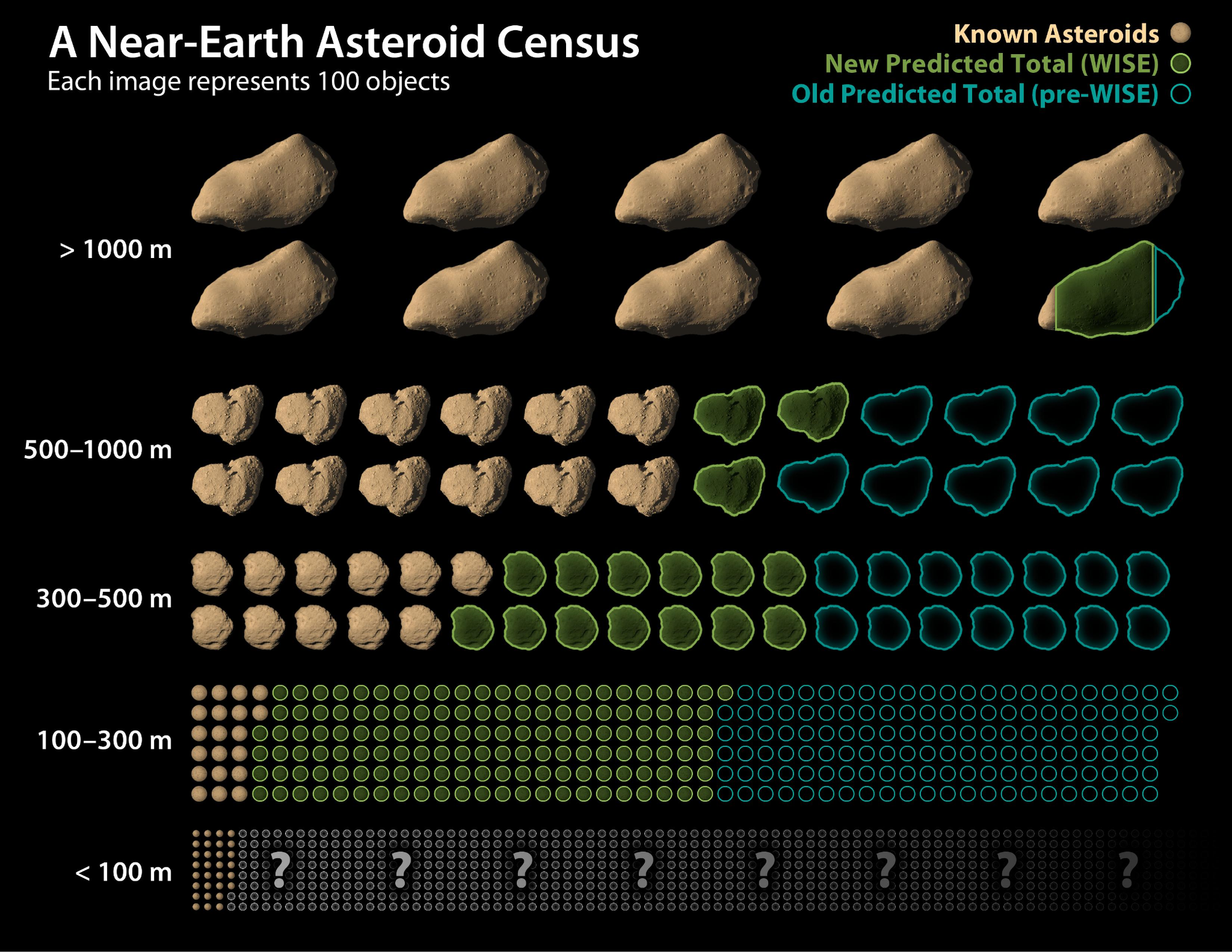
Although it is reassuring that most of the very large objects have been found, the fact that scientists believe that we have found fewer than half the intermediate-sized asteroids is alarming.
More work is needed to make sure we’re aware of these threats, since even an intermediate-size near-Earth object (NEO) could still destroy an entire country. At our current rate of asteroid discovery, it would take more than a century to find nearly all those that pose a threat to us!
We need more advanced space telescopes, particularly infrared ones, and we need them positioned where they can best see these threats. If a space telescope were in orbit around the Sun, say at around the distance of Venus, it could look out from the Sun toward the band of the Earth orbit, where these threatening objects are often found.
Congress in 2005 had mandated that NASA find all such objects:
The Congress declares that the general welfare and security of the United States require that the unique competence of the National Aeronautics and Space Administration in science and engineering systems be directed to detecting, tracking, cataloguing, and characterizing near-Earth asteroids and comets in order to provide warning and mitigation of the potential hazard of such near-Earth objects impacting the Earth.
But since there was no specific funding to accompany the mandate, the goal has not been achieved.
Seeing a lack of government funding, concerned individuals set up an organization, the B612 Foundation, to build and launch such a space telescope. They sought private funding and NASA grants. It had a goal of finding 90% of objects at least 140 m in diameter. The Sentinel Space Telescope, as they named it, lost its meager NASA funding in 2015, and the Foundation wasn’t able to raise the half-billion dollars required to launch. The world remained without a meaningful way forward to detecting these threats.
But now, NASA is working on a new space telescope, the NEO Surveyor. If the people working on it aren't laid off, it is currently scheduled to launch in 2027. It will sit at a stable location in between the Earth and the Sun known as the L1 point, from which vantage point it will be able to look outwards from the Sun to have an improved field of view of near-Earth objects.
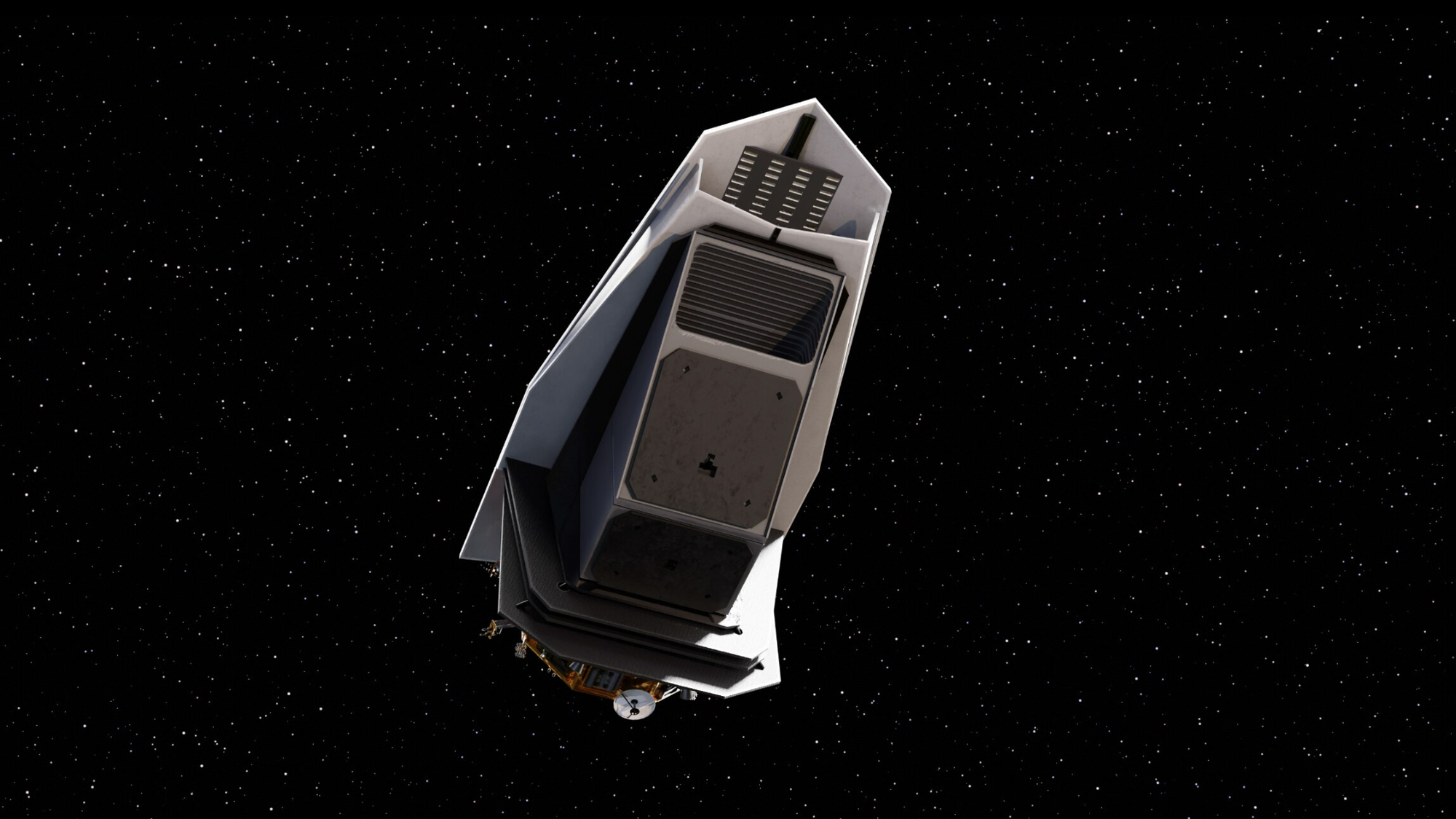
It is expected to be able to find 200,000 to 300,000 new NEOs, with sizes as small as 10 m in diameter. Its telescope will be 0.5 m in diameter, and it will be passively cooled, to avoid a shortened mission lifetime due to using up coolant, as happened with WISE.
Every day, it will beam 10 gigabytes of data back to Earth.
If this project continues on track, it will be a major improvement in our knowledge of NEOs.
But finding asteroids is only half the battle. The real question: What can we actually do about them?
2. How Can We Defend Ourselves Against NEOs?
If the object is small, the zone of destruction would be local, and the area could be evacuated. If there are years of advance warning time, this might be difficult, but it should be possible.
But what if the object is large? Or what if we aren’t content to simply abandon a major metro area and allow it to be completely destroyed?
How can we prevent one of these objects from colliding with our home planet in the first place?
It all comes down to the amount of energy we are able to apply. To shift an object’s orbit, you need to either provide a great deal of power for a short time, or a smaller amount of power for a long time. How can this be achieved?
Kinetic impact: We could launch a rocket toward the asteroid, which would crash into it, giving it a small push and changing its orbit. If the object is small and there is plenty of warning time, the small change in orbit could be enough to cause it to miss the Earth.
Detonation: With a sufficiently powerful blast, it would be possible to break the asteroid into pieces. If any remained on a collision course with the Earth, their smaller size would improve the odds that the atmosphere would provide sufficient protection.
Laser ablation: We could blast the asteroid with a laser, causing its outer layer to vaporize and act like a thruster rocket. Such a laser could be fired from space, or from the Earth.
Attach a rocket to an asteroid: One way would be to land an ion-thruster rocket on the surface of the asteroid and deploy a solar array to power it, providing long-term orbital change. Or land a nuclear rocket on the surface, attach it, and fire it up.
Overall, we need huge amounts of power to successfully achieve the redirection of a larger object.
Only nuclear processes could provide the needed power. A nuclear interceptor, essentially a nuclear missile launched at the asteroid and detonating at its surface, could have a much greater impact than simply running into it, kinetically. And a space-based laser ablation system, powered by a space-based nuclear reactor—something we should have for many other reasons too—could apply a continuous force to the asteroid.
In 2022, NASA achieved a remarkable demonstration of planetary defense technology. The Double Asteroid Redirection Test (DART) mission successfully changed the orbit of an asteroid by crashing into it at 14,000 miles per hour. The target, Dimorphos, was a tiny asteroid orbiting like a moon around a larger asteroid named Didymos.
The goal was to change Dimorphos’s orbital period (of approximately 12 hours) by about one minute, a fraction of one percent.
DART made a bulls-eye collision with Dimorphos on Oct. 26, and new data analysis over the next weeks revealed that its orbit had been reduced by 32 minutes, far beyond the goal.
“For the first time ever, humanity has changed the orbit of a planetary object,” exclaimed the enthusiastic Director of NASA’s Planetary Science Division, Lori Glaze, at the press event to celebrate the mission’s success.
“NASA made history once again. We conducted humanity’s first planetary defense test. And we showed the world that NASA is serious as a defender of this planet,” NASA Administrator Bill Nelson proudly told the press conference. “This is a watershed moment for planetary defense, and a watershed moment for humanity. And that’s why it was fitting that DART was an international endeavor,” he continued, referring to NASA’s collaboration with the Italian Space Agency. “Science benefits humanity. This is a unifying mission.”
3. International Cooperation?
As NASA Administrator Nelson’s comments indicate, a full system of planetary defense must be an international one. Ground-based telescopes are needed all around the world. And already, there is good cooperation in space science globally. But better observations are needed, and the use of powerful lasers or nuclear explosives or engines in space would demand new international agreements.
We can take a cue from President Reagan’s 1983 Strategic Defense Initiative—an idea that came from Lyndon LaRouche. The intention was to develop new technologies for defense against nuclear weapons, and to develop these technologies in collaboration with the Soviet Union, for mutual benefit. Not only was the program designed to reduce the danger of nuclear extinction, it was also intended to improve the technical and scientific standing of the human species, to transform our economic potential through the introduction of new principles and processes.
The Soviet Union rejected Reagan’s offer, but we have a new opportunity in the present.
Will the United States, Russia, China, India, Europe’s ESA, Japan’s JAXA, and other space agencies cooperate on the Strategic Defense of Earth?[[1]] Will we work together to develop fusion-powered rockets, capable of diverting large asteroids by accelerating rapidly toward them? Will we cooperate on sharing data and launching NEO-detecting satellites? And will we reach agreements on the use, in space, of technologies of potential military application?
Humanity has a choice: cooperate to defend our shared future, or risk catastrophe due to inaction. Which will we choose?
4. Benefits for Technology, Society, and Economy
Building on the SDI’s intention of improving science and technology overall while defending against a menacing threat, we can ask what other benefits a planetary defense project will have for technology, society, and the economy.
In an era of budget cutting, we should recognize that some programs have a negative net cost. Going to the Moon was enormously expensive—it cost a lot. But the profit was even greater! The new technologies, industrial processes, and project management skills developed to achieve that awesome goal made their effects felt in the economy as a whole. Improvements in precision, demanded by the needs of the Apollo program, became available for industry more generally. The explosion of interest in science, including in universities, created a more capable and creative workforce. Economic studies completed decades ago put the return on investment at greater than 10-to-1. But while the expense has already been incurred, in the 1960s, the benefits continue to accrue.
The technologies whose development were necessary to achieve the Strategic Defense of Earth (SDE) will provide benefits far beyond ensuring that a rogue space rock does not destroy the beauty of human civilization. The SDE would require breakthroughs in nuclear fusion, lasers, satellites, communication, and even international agreements.
“I’m focused on building the most powerful military of the future,” President Donald Trump said in his March 4 address to a joint session of the Congress. “As a first step, I'm asking Congress to fund a state-of-the-art ‘Golden Dome’ missile defense shield to protect our homeland.” Such a defense system, named with reference to Israel’s Iron Dome system, cannot protect the United States from the effects of a nuclear exchange.
But if Trump were to couple his efforts to normalize relations with the world’s other leading nuclear power, Russia, with an initiative to cooperate on a Strategic Defense of Earth, this would give further substance to the future relations of the two countries. It would open a window to a world where nations cooperate on civilization-advancing endeavors, rather than compete in creating civilization-destroying weapons.
[[1]]: The “Strategic Defense of Earth” was proposed by Russia in 2011 through its then-ambassador to NATO, and later Roscosmos chief, Dmitry Rogozin. The parallel to Reagan’s proposal was intended. The LaRouche movement publication 21st Century Science and Technology devoted its Fall–Winter 2012–2013 issue to the topic.


